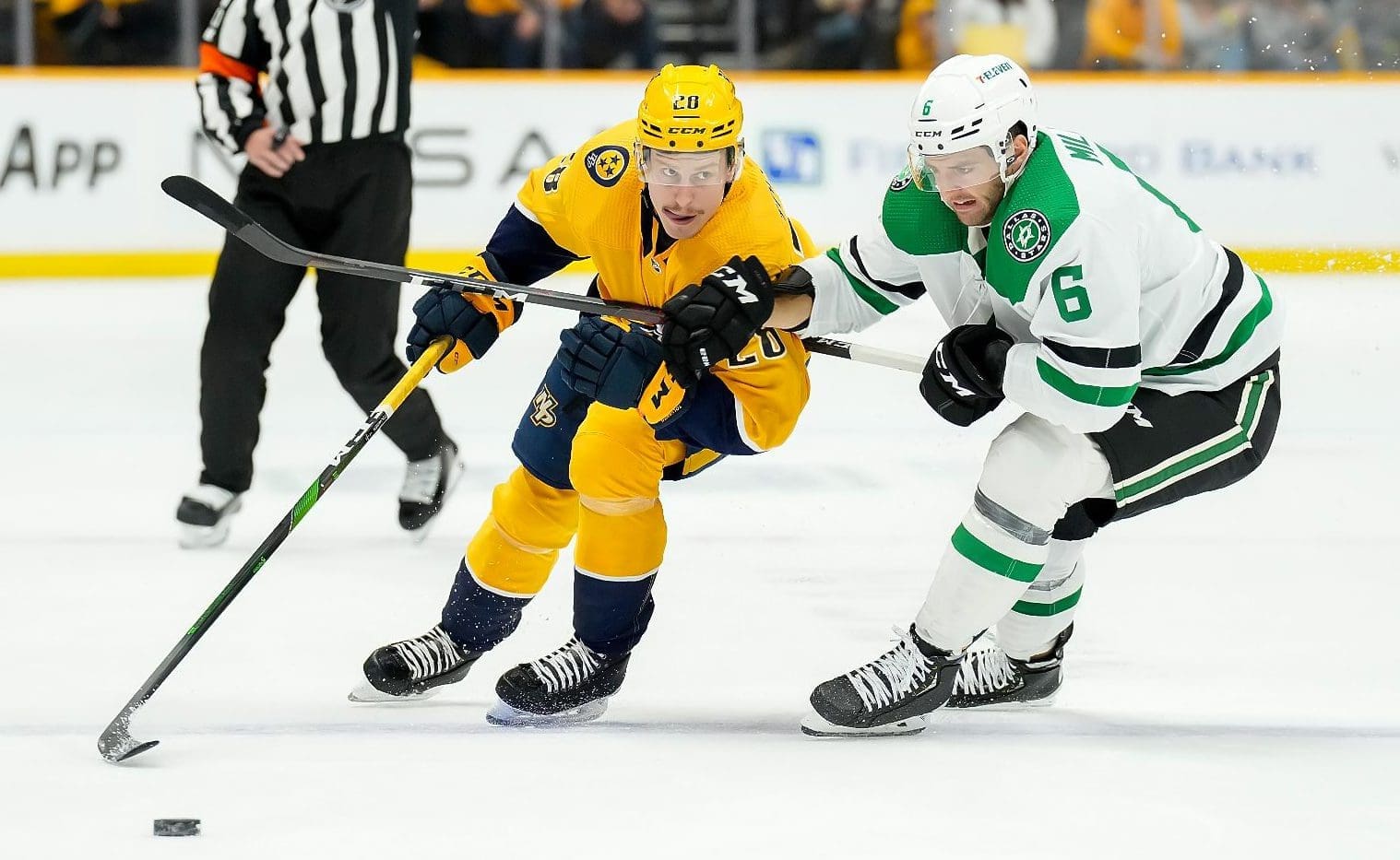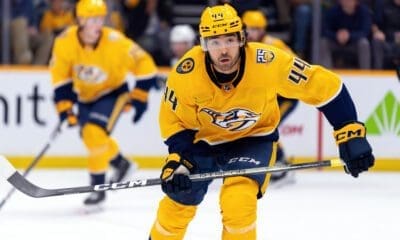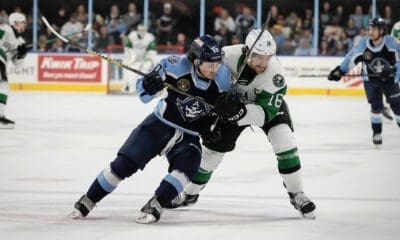Nashville Predators
Revisiting The Five Worst Draft Classes Of The David Poile Era

Following the 2023 NHL Draft, David Poile retired after 25 years as the general manager of the Nashville Predators, putting a stamp on his Hall of Fame career.
Over the next few weeks, Nashville Hockey Now will reflect back on the last two-and-a-half decades, highlighting the good and not-so-great moments from Poile’s tenure as Predators GM.
While Poile has had his share of draft success, he’s also had a decent amount of draft misses as well. We’ve already touched on the Predators’ best draft classes and below are the five worst draft classes from Poile’s tenure:
No. 1 – 2006
Notable picks: Blake Geoffrion, Mark Dekanich
Although Geoffrion was a second-round pick, fans were highly invested in him as he grew up in Brentwood and was hoped to be the first player from the Nashville area to make it big in the NHL.
He played in just 42 games with the Predators and was traded to the Montreal Canadiens in 2012 along with Robert Slaney and a second-round pick for defenseman Hal Gill and a fifth-round pick. Geoffrion was forced to retire in 2013 after suffering a skull fracture after striking his head on Jean-Philippe Coute’s skate blade during a game in November 2012.
Dekanich is the only other player from this class to make it to the NHL, though it was just for one game in which he allowed three goals on 25 shots in relief of Anders Lindback against the L.A. Kings in 2010. He became a free agent in 2011 and never made it back to the NHL with stints in the ECHL, AHL and KHL.
The 2006 class accounted for 11 points in 42 games plus one goaltending appearance with an .880 save percentage and 3.60 goals-against average for the Predators.
No. 2 – 2017
Top pick: Eeli Tolvanen, Grant Mismash, David Farrance, Tomas Vomacka
This class is ranked so high for one reason: Poile’s complete bungling of the Eeli Tolvanen situation, which boiled down to his siding with embattled head coach John Hynes over a highly touted former first-round pick.
Poile gave Tolvanen away for nothing, then proceeded to watch him score 16 goals and 27 points in 48 regular-season games plus three goals and eight points in 14 playoff games for the Seattle Kraken, where it appears Tolvanen is finally playing for a coaching staff that knows how to use him. If he becomes the elite scoring forward the Predators hoped he would be when they drafted him 30th overall, exposing him to waivers could go down as arguably the worst move of Poile’s career.
After scoring a highlight-reel goal during the 2018 World Juniors, Farrance was hyped as the next in a long line of up-and-coming Predators blue-liners. However, he played in just two games for the Predators and was not tendered a contract following the 2022 season. He spent the last two seasons in the AHL with the Chicago Wolves and Colorado Eagles, and he recently signed with the Toronto Marlies on Tuesday.
Mismash played in 57 games for the Admirals but never cracked the Predators roster. He was traded to the Tampa Bay Lightning last offseason along with Philippe Myers for defenseman Ryan McDonagh. Vomacka was a favorite during Predators development camp but never made it past the AHL level. He confirmed to Nashville Hockey Now over the summer that he was planning to play in Czechia during the 2023 season.
The 2017 class accounted for 51 points in 137 games for the Predators.
No. 3 – 2018
Notable picks: Jachym Kondelik, Spencer Stastney, Vladislav Yeryomenko, Milan Kloucek
Not much was expected from this class considering the Predators didn’t pick until the fourth round; however, the only fruit from these picks has been the two points in eight games that Spencer Stastney contributed at the end of last season.
Stastney is the only player in the class that appears will amount to anything in the NHL. The 23-year-old defenseman was our No. 10-ranked prospect in our Predators organizational rankings, and he could be called up to the NHL for more regular playing time at some point this season.
In the four seasons since he was drafted Kondelik has tallied just 29 goals and 89 points in 133 games between the University of Connecticut and the Milwaukee Admirals. He hasn’t shown signs of being anything more than a fourth-line center, and it’s possible the team lets him walk when he becomes a restricted free agent after the 2023-24 season.
Along with Hardy Haman-Aktell, Kloucek was not offered an entry-level contract in 2020 and he elected to stay in Czechia and play for HC Dynamo Pardubice, where he’s been for the last four seasons. Kloucek never appeared to be in the team’s long-term plans.
Yeryomenko has spent the last four seasons in the KHL — two with Dinamo Minsk and two with Metallurg Magnitogorsk. While the Predators still own his rights, there’s no indication the team plans to bring him to North America anytime soon as he signed a new deal with Metallurg this offseason.
The 2018 class accounted for two points in eight games for the Predators.
No. 4 – 2007
Notable picks: Jonathan Blum, Nick Spaling, Andreas Thuresson
Blum was supposed to be another Ryan Suter-type top-pairing defenseman, but he had just seven goals and 22 points with a minus-7 rating in three seasons with the Predators and he never reached his potential. His name was floated in seemingly every trade rumor the Predators come up in from 2007 to 2012 when he was not offered a contract extension and subsequently joined the Minnesota Wild.
Spaling is the biggest success of the group, which isn’t saying much considering he scored just 40 goals and 84 points over five seasons in Nashville. He never scored more than 13 goals or 32 points in any season and he was out of the NHL just two years after parting ways with the Predators.
Thuresson scored just three points in 25 games with the Predators and he spent four seasons with the Admirals before bouncing around the KHL, Swedish Hockey League and Deutsche Eishockey Liga.
The 2007 class accounted for a combined 109 points in 413 games for the Predators.
No. 5 – 2011
Top pick: Magnus Hellberg, Miikka Salomaki, Chase Balisy
Hellberg was supposed to be Pekka Rinne’s heir apparent before Juuse Saros come along, but he made just one appearance for the Predators and after three seasons with the Admirals, he was traded to the New York Rangers for a sixth-round pick. The 32-year-old has played in just 23 NHL games since being drafted and he found decent success in the KHL before returning to the NHL in 2022. He signed with the Pittsburgh Penguins this offseason.
Salomaki scored just 12 goals and 27 points in his time with the Predators, but he established a blueprint for what the team should expect out of its bottom-six forwards. A prototypical grinder, Salomaki totaled 380 hits and 98 blocked shots while setting the tone defensively for Nashville’s postseason runs from 2015 to 2019.
Of the other five picks from this class, Balisy is the only player to play in an NHL game, though it wasn’t for the Predators. After graduating from Western Michigan, Balisy spent five seasons in the AHL before spending the last three years with the Straubing Tigers in Deutsche Eishockey Liga.
The 2011 class accounted for a combined 27 points in 167 games plus one goaltending start with a 4.92 goals-against average and .750 save percentage for the Predators.
Honorable mention:
1999 — notable picks: Brian Finley, Adam Hall, Andrew Hutchinson, Martin Erat
2002 — notable picks: Scottie Upshall, Brandon Segall, Mike McKenna
2010 — notable picks: Austin Watson, Anthony Bitetto
Follow Michael Gallagher on Twitter @MGsports_















